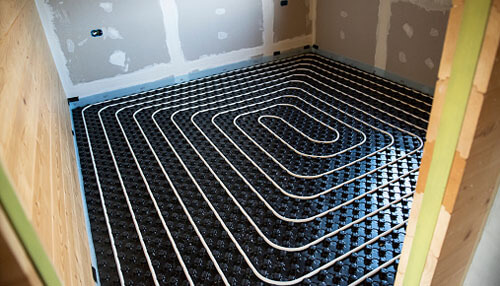Reliable and efficient heating solutions are critical to the performance of industrial applications. There’s so much loss due to poor temperatures in industries, so flexible heating elements are a hot topic among manufacturers.
Flexible heaters can be used for cooking, washing, drying, sterilizing, preheating feed water in boilers, and process heating, among others in heat industries.
Flexible heater elements provide both friendly heating and intense thermal retrieval. They easily conform to the heating surface, making them versatile.
But with the vast selection from different manufacturers, it can be challenging to make an ideal choice. Besides, these heating elements come in various materials and are customizable to meet thermal transfer application requirements.
Here are some crucial pointers to help. Read to the end.
What Are Flexible Heaters?
Flexible heaters are heating devices that conform to the shape of the heated object. Most flexible heaters can bend around a small circle once or more without tampering with the internal heating elements.
Gone are the days when bulky and complicated heating systems occupied significant space in industrial applications. Manufacturers now prefer custom flexible heaters to make their operations better and more effective. These heaters come in handy when you want stable temperature distribution for specific applications. Depending on the nature and requirements of the applications, you can choose among the best flexible heaters.
Flexible heaters are different because of the various materials they are made of. The common ones that are rugged and durable include Silicone rubber heaters, Polyester film heaters, and Polyimide heaters.
So, if you want a moisture-resistant heating system, you should use polyester heaters. Similarly, flexible silicone heaters are suitable for thermal recovery and intense heating applications. But If your requirements are particular, go for unique custom heaters designed to your specifications. In most cases, you can find them even in small orders.
What Should You Know Before Buying Flexible Heaters?
Because of their significant roles, knowing what to look for is crucial. Essential factors to consider when buying hi-heat heaters include;
1. Performance Specifications
Performance specifications for film heaters include AC voltage, maximum operating temperature, heating capacity, and watt density.
1. AC voltage: AC is the process of electrons moving in a conductor in an alternating direction. So, AC Voltage in a heating system is the least necessary Alternating Current (AC) for operating the cartridge heater.
2. Maximum operating temperature: The highest temperature point the material enclosing the cartridge heater may reach. Things like watt density, construction material, and voltage requirements significantly affect the working temperature of the Kapton heater.
3. Heating capacity: This is the amount of thermal energy the hi-heat heater delivers; the SI unit is kilowatts. So, the watt density is the wattage measurement for each square inch received from the cartridge heater. However, take caution with high watt density heaters. Because of the fire risk, you should avoid using sticky, poorly constructed, or flammable materials. High watt density heaters perform well in higher operating temperatures.
2. Type of Heating Element
Flexible heater elements come in two types–etched foil and wire-wound.
1. Etched foil heating elements: These solid heating elements are engraved out of a foil substance. Usually, they have a low and flat profile that exposes the operational heating section. Etched foil heating elements feature a brief warm-up time, evenly dispense heat, and are more efficient than other custom heating elements.
2. Wire-wound heating elements: They comprise a resistant wire-shaped heating element coiled around a cable and then fixed in the effective heating–commonly Ni-Chrome. This flexible heating element is long-lasting and withstands constant winding without affecting the element. Even though they are not very effective and take longer to heat, they are an economical option when the heated area has a large surface area.
3. Dimensions
In terms of length and width, size is crucial in choosing film heaters. They should be sized appropriately to fit their particular application. Fortunately, reputed custom heater manufacturers customize their flexible heaters accurately to match your intended applications.
4. Sheath Material
Custom flexible heaters come with a sheath or sleeve that condenses the heating element. The purpose of the sheath is to offer electrical insulation and provide a physical protective layer.
Insulating the heating elements is essential to prevent short-circuiting or power failure on the load. Still, the physical barrier helps to prolong the heater’s life and enables the device to work in harsh conditions like wet and corrosive. Polyimide (Kapton), Silicone Rubber, Teflon, or Mica are popular material options for the sheath.
5. Mounting Method
When choosing your preferred flexible heater, it would also be best to consider the type of mounting method. This would help in its effectiveness.
Usually, regardless of the material, shape, and size, flexible heaters heat the necessary parts directly. They can be etched or wound on specific surfaces to heat the components. Better still, they are lightweight and cannot impact any mobile parts in applications.
So, a preferred mounting method and location is a matter of personal preference. However, your flexible heater provider can also give recommendations that suit the applications. Besides, they are resilient enough to withstand chemical and moisture exposure.
6. Compliance
Depending on where you’re buying your flexible heaters, ensure they comply with quality assurance and safety standards. For instance, the European Union (EU) has Restriction on Hazardous Substances (RoHS) that requires all European electronic manufacturers and electrical equipment to show they are not hazardous. This means they should contain at least zero levels of lead, mercury, cadmium, chromium, and other toxic elements.
Still, there’s a need to follow compliance that encourages recycling, reuse, and recovery of electronic equipment. Such compliance seeks to enhance and protect the environment. There are also specified criteria for the reuse, recycling, and recovery processes.
Final Word
As observed, a flexible heater conforms to the heating surface. There are different materials of flexible heaters to choose from, depending on the application.
Custom heating elements are used in several industrial, commercial, military, and medical applications where consistency, effectiveness, reduced cross-section, durability, and flexibility are vital.



